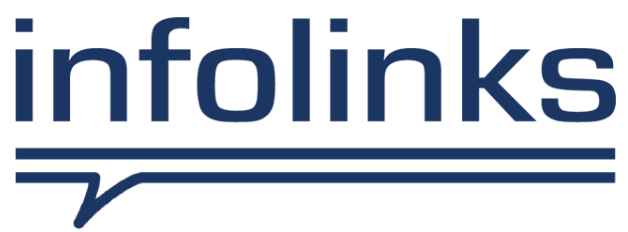TOT ODP/SWP CR MEMO: What Does It Mean?

In the world of financial transactions, it is common to come across various terms and abbreviations that may seem confusing at first. One such term is TOT ODP/SWP CR MEMO. To help demystify this abbreviation, let’s delve into its meaning and significance in the context of banking and personal finance.
TOT ODP/SWP CR MEMO refers to the total amount of overdraft protection and standby credit authorized on a customer’s account. It represents the combined limit provided by a financial institution to cover transactions that exceed the available balance in the customer’s account. In simple terms, it acts as a safety net, preventing transactions from being declined due to insufficient funds.
Understanding the components:
– ODP (Overdraft Protection): This feature enables account holders to link their checking account to another source, such as a savings account or credit card, to cover the shortfall when making withdrawals or purchases.
– SWP (Standby Credit): This feature serves as a line of credit that can be used to cover overdrafts in case other sources of overdraft protection are not available or fully utilized.
Why is it important?
TOT ODP/SWP CR MEMO plays a vital role in avoiding embarrassing situations of declined transactions, preventing overdraft fees, and maintaining a positive relationship with the financial institution. It offers peace of mind by ensuring that essential purchases can be made even when the available funds are temporarily insufficient.
By utilizing a combination of overdraft protections and standby credit, customers can navigate unexpected expenses or emergencies, access additional funds, and avoid potential negative consequences such as damage to credit history or possible legal actions. It is essential to review the terms and conditions of these services, including any associated fees, to make informed decisions about their usage.
In conclusion, TOT ODP/SWP CR MEMO represents the total authorized overdraft protection and standby credit on an account, providing a financial buffer to handle transactions that exceed the available balance. It is a valuable tool that enables individuals to maintain their financial flexibility and make essential purchases when funds are temporarily low. Understanding the mechanisms and implications of TOT ODP/SWP CR MEMO is crucial in effectively managing personal finances and staying in control of one’s banking transactions.
Purpose of TOT ODP/SWP CR MEMO
The purpose of the TOT ODP/SWP CR MEMO is to notify account holders about overdraft protection transfers and the associated fees. When a customer’s account balance is insufficient to cover a transaction, the financial institution may automatically transfer funds from a linked account or provide standby credit to cover the shortfall. This transfer or credit is represented by the TOT ODP/SWP CR MEMO.
The memo plays a crucial role in helping account holders understand the reason for their negative balance and the need to pay additional charges. It serves as a notification that the financial institution has stepped in to prevent the transaction from being declined, but at the cost of an overdraft fee. By providing this information, the memo ensures transparency and helps customers keep track of their financial transactions.
Understanding the purpose of the TOT ODP/SWP CR MEMO is important for account holders to avoid unnecessary charges and manage their finances more effectively. By being aware of their overdraft protection options and the associated fees, customers can make informed decisions about their account usage and avoid incurring unnecessary expenses.
Definition of Overdraft Protection and Its Benefits
Overdraft protection is a financial service offered by banks and credit unions that allows account holders to prevent their transactions from being declined due to insufficient funds. When an account holder makes a transaction that exceeds their available balance, the financial institution steps in and covers the difference, resulting in a negative balance. However, this service comes with an overdraft fee. The memo serves as a notification to the account holder, explaining the reason for the negative balance and disclosing the additional charges incurred. While overdraft protection may come with fees, it offers several benefits to customers. It helps prevent embarrassing declined transactions, avoids potential disruption to essential purchases, and provides a safety net for unexpected expenses. Additionally, overdraft protection can have positive impacts on credit history. By paying the overdraft fee and resolving the negative balance promptly, customers demonstrate responsible financial management to credit card companies and credit service agencies. Overall, overdraft protection can be a convenient and valuable tool for account holders to ensure their financial transactions are successful while providing peace of mind for unexpected expenses.
What Is Overdraft Protection?
Overdraft protection is a useful financial tool offered by many banking institutions that helps prevent declined transactions and potential fees caused by insufficient funds in a checking account. With overdraft protection, customers have the option to link their checking account to another account, such as a savings account or a credit card.
When a transaction is initiated and there are not enough funds available in the checking account, overdraft protection automatically transfers funds from the linked account to cover the overdraft. This automated process ensures that essential purchases are not declined and allows users to maintain their financial activities without interruption.
It is important for customers to opt into overdraft protection. In the past, financial institutions automatically enrolled customers into this service without obtaining their consent. However, there has been a change in policy, and now customers must actively choose to opt in. This empowers individuals to have more control over their banking experience and reduces the likelihood of unexpected fees or charges.
While overdraft protection offers many benefits, it is essential for customers to be aware of overdraft protection transfer fees. When funds are transferred to cover an overdraft, the financial institution may charge a fee for this service. It is crucial for customers to understand and compare any associated charges to make informed decisions about utilizing overdraft protection.
In summary, overdraft protection is a valuable tool that helps customers avoid declined transactions and potential fees. By opting into this service and understanding any associated fees, individuals can have peace of mind and maintain financial flexibility.
Benefits of Overdraft Protection
Overdraft protection provides numerous benefits to account holders, offering a safety net against declined transactions and unnecessary charges caused by insufficient funds.
One of the key advantages is the prevention of declined transactions. When a customer initiates a transaction, such as a debit card purchase or an online transaction, and there are not enough funds available in their checking account, overdraft protection automatically transfers the necessary funds from a linked account. This ensures that essential purchases are not declined, allowing account holders to smoothly carry out their financial activities without interruption.
Additionally, overdraft protection helps individuals avoid additional charges. Without overdraft protection, insufficient funds can result in overdraft fees or other penalties imposed by the financial institution. With overdraft protection in place, these fees can be avoided or minimized, saving account holders from unnecessary expenses.
Moreover, overdraft protection offers account holders convenience and flexibility. By opting into this service, customers have the peace of mind of knowing that their transactions will be covered, even if they have a temporary shortfall in funds. This eliminates the need to constantly monitor their checking account balance or worry about declined transactions.
In conclusion, overdraft protection is a valuable feature that ensures uninterrupted financial activities, prevents declined transactions, and helps account holders avoid additional charges caused by insufficient funds. The convenience and flexibility it offers make it an essential tool for managing one’s finances effectively.
Definition of Standard Withdrawal Plan and Its Benefits
A Standard Withdrawal Plan (SWP) is a financial strategy that allows individuals to systematically withdraw a predetermined amount from their investment accounts, typically on a scheduled basis. This provides a reliable source of income during retirement or other financial goals. SWP offers numerous benefits, including consistent cash flow, financial security, tax advantages, and flexibility in managing personal finances.
Consistent Cash Flow:
By implementing a SWP, individuals can establish a predictable cash flow stream, ensuring a regular income to cover daily expenses or achieve financial goals. This helps to eliminate the uncertainty associated with market fluctuations and provides peace of mind knowing that funds will be available on a scheduled basis.
Financial Security:
SWP offers a structured approach to managing finances, especially during retirement. It allows individuals to withdraw a specific amount regularly, providing a stable source of income. This can help ensure that one’s financial needs are met, allowing for a comfortable and secure lifestyle throughout retirement.
Tax Advantages:
Another benefit of SWP is the potential for tax advantages. By utilizing this withdrawal strategy, individuals can strategically plan their withdrawals to optimize tax efficiency. This may involve spreading out withdrawals over multiple tax years or taking advantage of lower tax brackets. With proper planning, individuals can minimize their tax liability and retain more of their hard-earned savings.
Flexibility in Managing Personal Finances:
SWP offers flexibility in managing personal finances. It allows individuals to customize their withdrawal amounts and frequency according to their specific needs and financial goals. Whether one requires a steady income to cover essential expenses or additional funds for discretionary spending, SWP can be tailored to suit individual circumstances.
Implementing a Standard Withdrawal Plan can provide individuals with a consistent cash flow, financial security, tax advantages, and flexibility in managing their personal finances. Whether planning for retirement or other financial goals, SWP offers a structured approach to ensure a reliable income stream, providing peace of mind and enabling individuals to enjoy a comfortable and secure lifestyle.
What Is Standard Withdrawal Plan (SWP)?
A Standard Withdrawal Plan (SWP) is a convenient and effective financial strategy that allows individuals to systematically withdraw a predetermined amount from their investment accounts on a scheduled basis. SWP provides numerous benefits, including consistent cash flow, minimized fees, and convenient banking.
Firstly, SWP ensures a consistent cash flow by establishing a predictable income stream. This enables individuals to cover daily expenses or achieve their financial goals without worrying about market fluctuations. By scheduling automatic transfers, individuals can have peace of mind knowing that funds will be available on a regular basis.
Secondly, SWP helps minimize fees. By implementing this plan, individuals can avoid unnecessary charges such as overdraft fees and extra charges associated with irregular transactions. SWP allows for proper planning and management of finances, reducing the risk of incurring unnecessary expenses.
Lastly, SWP provides convenient banking. By setting up automatic withdrawals, individuals can streamline their financial activities. They can focus on other aspects of their lives without constantly monitoring and manually managing their withdrawals.
In conclusion, a Standard Withdrawal Plan (SWP) offers significant benefits such as consistent cash flow, minimized fees, and convenient banking. By utilizing this financial strategy, individuals can confidently manage their finances and achieve their financial goals efficiently.
Benefits of SWP
The Standard Withdrawal Plan (SWP) offers several benefits that can help users manage their finances more efficiently.
Firstly, SWP allows for automatic transfers from a linked account. This feature ensures that funds are readily available to cover any potential overdraft transactions. By automatically transferring money from a savings or secondary account, users can avoid the hassle of dealing with overdraft fees and the stress of having a negative balance. SWP provides a safety net that helps users maintain financial stability and avoid unnecessary charges.
Secondly, SWP enables users to effectively manage their finances. By setting up automatic transfers, individuals can establish a regular and predictable income stream. This helps them plan and budget their expenses more effectively, ensuring that they are covered without the need to constantly monitor their account balance. SWP provides peace of mind, as users can trust that the necessary funds will be available when needed, without the risk of incurring additional fees or charges.
Overall, the Standard Withdrawal Plan (SWP) simplifies financial management by offering automatic transfers to cover potential overdraft transactions. This not only saves users from overdraft fees and negative balances but also allows for more efficient budgeting and expense planning. SWP provides a convenient and reliable method for individuals to effectively manage their finances and achieve their financial goals.
How Does the TOT ODP/SWP CR Memo Work?
Introduction:
The TOT ODP/SWP CR Memo is a crucial feature provided by financial institutions that allows users to effectively manage their finances and avoid unnecessary charges. This system enables automatic transfers from a linked account, ensuring that sufficient funds are available to cover potential overdraft transactions. By setting up these transfers, users can enjoy financial stability, peace of mind, and avoid the hassle of dealing with overdraft fees and negative balances. Let’s explore how the TOT ODP/SWP CR Memo works and the benefits it offers.
The TOT ODP/SWP CR Memo works by automatically transferring money from a savings or secondary account to cover potential overdraft transactions. When a bank customer makes a purchase that exceeds their available balance, instead of declining the transaction or charging an overdraft fee, the TOT ODP/SWP CR Memo system kicks in. It initiates an automatic transfer from the linked account to cover the transaction, ensuring that there are sufficient funds available. This proactive approach helps users avoid the stress of having a negative balance and the financial burden of overdraft fees.
Moreover, the TOT ODP/SWP CR Memo system allows users to establish a regular and predictable income stream. By automating their transfers, individuals can effectively manage their finances, plan and budget their expenses more effectively. This eliminates the need for constant monitoring of their account balance, providing peace of mind knowing that the necessary funds will be available when needed.
Overall, the TOT ODP/SWP CR Memo is a valuable tool offered by financial institutions to help users maintain financial stability, avoid unnecessary charges, and effectively manage their finances. It provides a safety net and helps individuals confidently navigate their financial responsibilities without the fear of incurring additional fees or charges.
Overview of the Memo Process
The TOT ODP/SWP CR memo process provides an effective way for individuals to manage their finances and avoid unnecessary charges. This system is primarily used in conjunction with overdraft protection and standard withdrawal plans.
The memo process begins when a bank customer makes a transaction that exceeds their available balance. Instead of rejecting the transaction or charging an overdraft fee, the TOT ODP/SWP CR memo system comes into play. It automatically initiates a transfer of funds from a linked savings or secondary account to cover the transaction amount, ensuring that there are sufficient funds available.
The key steps involved in the memo process include:
1. Transaction Initiation: When a customer makes a purchase or payment that surpasses their account balance, the TOT ODP/SWP CR memo system is triggered.
2. Automatic Transfer: The TOT ODP/SWP CR memo system automatically transfers funds from a linked savings or secondary account to cover the transaction.
3. Sufficiency Check: The system verifies whether there are enough funds available in the linked account to cover the transaction. If so, the transfer is completed successfully.
4. Avoidance of Overdraft Fees: By utilizing the TOT ODP/SWP CR memo process, customers can evade the burden of overdraft fees, as the system ensures that sufficient funds are always available.
Overall, the TOT ODP/SWP CR memo process simplifies financial management, providing peace of mind and helping customers avoid unnecessary charges.
Step-by-Step Guide to Using the Memo Process
The memo process is a convenient feature offered by financial institutions to help customers manage their finances effectively and avoid overdraft fees. The TOT ODP/SWP CR memo system is specifically designed to automatically transfer funds from a linked savings or secondary account when a transaction exceeds the available balance. Follow these step-by-step instructions to utilize the memo process:
1. Set up the Memo Process: Ensure that you have a linked savings or secondary account connected to your primary checking account. This allows for seamless fund transfers when needed.
2. Monitor Your Account Balance: Keep an eye on your account balance and ensure that you have sufficient funds to cover your transactions. This helps you avoid triggering the memo process unnecessarily.
3. Initiate a Transaction: When making a purchase or payment that surpasses your account balance, proceed with the transaction as you normally would.
4. Allow the Memo Process to Activate: Once the transaction triggers the TOT ODP/SWP CR memo system, it will automatically initiate a transfer of funds from your linked savings or secondary account.
5. Verify Sufficient Funds: The memo system will check if your linked account has enough funds to cover the transaction. If sufficient funds are available, the transfer will be successfully completed.
By following this step-by-step guide, you can take full advantage of the memo process to avoid overdraft fees and ensure seamless transactions. Take control of your finances and enjoy the convenience of the TOT ODP/SWP CR memo system provided by your financial institution.






